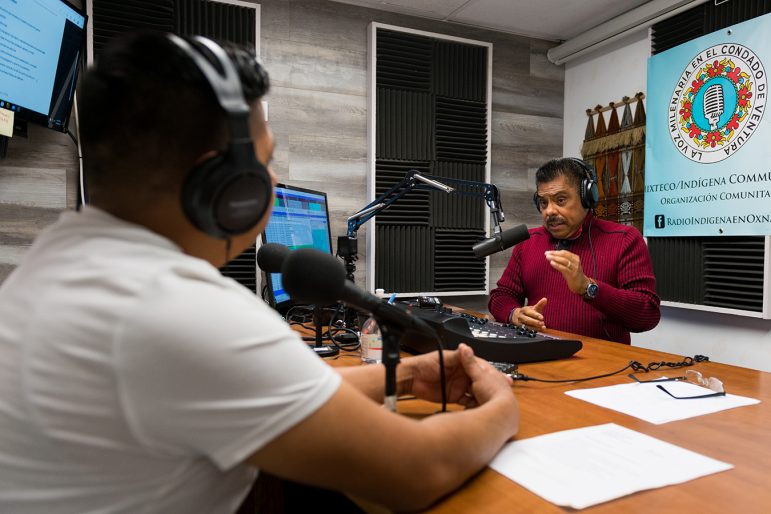SACRAMENTO, Calif. — In January, progressive California Democrats vowed to adopt the toughest COVID vaccine requirements in the country. Their proposals would have required most Californians to get the shots to go to school or work — without allowing exemptions to get out of them.
Months later, the lawmakers pulled their bills before the first votes.
One major vaccine proposal survives, but faces an uphill battle. It would allow children ages 12 to 17 to get a COVID-19 vaccine without parental permission. At least 10 other states permit some minors to do this.
Democrats blamed the failure of their vaccine mandates on the changing nature and perception of the pandemic. They said the measures became unnecessary as case rates declined earlier this year and the public became less focused on the pandemic. Besides, they argued, the state isn’t vaccinating enough children, so requiring the shots for attendance would shut too many kids out of school.
Political pressure from business and public safety groups and from moderate Democrats — along with vocal opposition from anti-vaccine activists — also contributed.
Now, even as case rates start to balloon again, the window of opportunity to adopt COVID vaccine mandates may have closed, said Hemi Tewarson, executive director of the National Academy for State Health Policy. “Given the concerns around mandates and all the pushback states have received on this, they’re hesitant to really move forward,” Tewarson said. “Federal mandates have stalled in the courts. And legislation is just not being enacted.”

Other states have also largely failed to adopt COVID vaccine requirements this year. Washington, D.C., was the only jurisdiction to pass legislation to add the COVID vaccine to the list of required immunizations for K-12 students once the shots have received full federal authorization for kids of those ages. A public school mandate adopted by Louisiana in December 2021 was rescinded in May.
The most popular vaccine legislation has been to ban COVID vaccine mandates of any kind, which at least 19 states did, according to the National Academy for State Health Policy.
In California, the landscape has shifted radically in just a few months. In January, a group of progressive Democrats unveiled eight bills to require vaccinations, combat misinformation, and improve vaccine data. Two were sweeping mandates that would have required employees of most indoor businesses to get shots and added COVID vaccines to the list of immunizations required for schools.
“It’s important that we continue to push for vaccine mandates the most aggressively we possibly can,” state Assembly member Buffy Wicks (D-Oakland) told KHN in early 2022. She was the author of the workplace mandate bill.
But the legislation imploded almost immediately.
In March, Wicks’ worker vaccine mandate proposal died. It was strongly opposed by firefighter and police unions, whose membership would have been subject to the requirement.
“I don’t think the anti-vaxxers carry much weight in Sacramento with my colleagues,” Wicks said. “They’re a pretty insignificant part of the equation.” The public safety unions “are the ones that carry the weight and influence in Sacramento,” she said.
California Professional Firefighters and other public safety groups argued in written opposition to the bill that mandates would interfere with their ability to negotiate employment requirements with their employers. “To summarily remove these bargained policies with a blanket mandate sets a dangerous and demoralizing precedent,” wrote the group, which represents 30,000 firefighters.
Schools were also supposed to be subject to a strict vaccine mandate.
In October 2021, Democratic Gov. Gavin Newsom announced that California would become the first state to require shots for schoolchildren starting in July 2022. That deadline has since been pushed back to at least July 2023.
And Newsom’s order came with a loophole that will allow parents to opt their kids out by claiming a “personal belief” exemption.
In January, when California routinely topped 100,000 new cases a day, lawmakers introduced legislation to prohibit personal belief exemptions for COVID vaccines — those are not allowed for any other required childhood vaccines.
Again, they soon backed off, saying the vaccination rate among kids was so low that shots shouldn’t be required until they’re broadly available in pediatrician offices.
About 60% of eligible Californians are fully vaccinated and have received a booster shot, while only 35% of kids ages 5 to 11 have received their first two doses, according to the California Department of Public Health. Boosters were approved for children in mid-May.
Instead of implementing mandates, the state should focus on educating and reaching out to parents, said Assembly member Akilah Weber (D-San Diego), an OB-GYN who was among the legislators who introduced the package of vaccine bills.
“It’s hard to make that argument that right now we need to be mandating when you have a good number of people who feel like we are past the pandemic,” she said.
Lawmakers could resurrect the mandate bills, she said, if hospitals and health care workers become overwhelmed again.
Cases are rising statewide. The rate of positive COVID tests has been as high as 7% in recent days, its highest level since February — and likely an undercount because of the people who are testing at home and not reporting results.
Weber’s suggestion to better engage parents helps explain why the legislation failed, said Robin Swanson, a Democratic political consultant based in Sacramento. State and local officials never clearly communicated with the public about vaccinating kids, she said, and didn’t effectively reach out to vulnerable populations from the outset. “You can’t build a mandate on top of distrust,” Swanson said.
Outreach and public information are critical, said Dr. John Swartzberg, a clinical professor emeritus of infectious diseases and vaccines at the University of California-Berkeley School of Public Health. But if those were paired with a mandate, he said, the state could vaccinate and protect many more children. “In businesses that mandate vaccines, it works pretty well,” Swartzberg said. “And in schools, in particular, it works very well.”
Pro-vaccine activists who vowed to have a greater presence in the California Capitol this year also thought mandates would dramatically boost vaccination rates. But as reality set in, they shifted their focus to boosting funding for vaccination and pushing surviving bills across the finish line.

“Yes, we do need vaccine requirements, and, yes, they do work,” said Crystal Strait, who leads the pro-vaccination organization ProtectUS. But she acknowledged that the situation had changed since January and said her group had to change with it: “We can’t be as simplistic as just a vaccine requirement.”
Newsom’s latest state budget proposal includes $230 million for vaccine outreach and $135 million for vaccine distribution and administration.
Strait’s group plans to combat vaccine misinformation among the public and wary lawmakers, including those within the Democratic ranks. “You have people saying they’re pro-science and pro-public health, but when push comes to shove, they’re not there yet,” Strait said of hesitant legislators.
Generally, vaccine mandates are popular with the public. According to a March survey from the Public Policy Institute of California, 57% of Californians favored requiring people to provide proof of vaccination to go to large outdoor gatherings or enter some indoor venues like bars and restaurants.
But Rose Kapolczynski, a Democratic strategist who worked on the pro-vaccine lobbying push with Strait, likened vaccine beliefs to climate change: Voters say they care, but other, more tangible issues, such as gas prices and reproductive rights, become more urgent to them.
“If things were as bad now as they were in January and February, there would be more concern and action,” said Catherine Flores-Martin, executive director of the pro-vaccine California Immunization Coalition.
“I’m disappointed that people are not taking the long view.”
